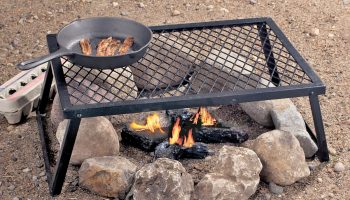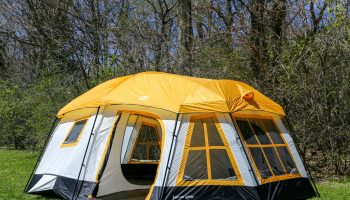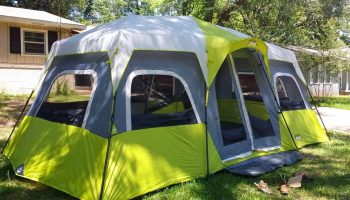An ideal backpacking tent is lightweight, packs down small, and is tough enough to handle inclement weather. The good news is that tent technology has come a long way even over the past few years, and weights are dropping as thinner yet strong fabrics and lighter poles are employed. Below are our picks for the best backpacking tents of 2017—all are 2-person, double-wall designs with tent poles, which means that we have not included ultralight shelters or tarps. Also, note that many of the tents that made our list are offered in 1, 3, and 4-person versions.
Contents
Critical Tent Considerations
Price
You shouldn’t have to spend a fortune to get a great backpacking tent. That’s why this list contains an array solid options in a variety of price ranges. If you backpack a lot, it probably makes sense to spend more for a quality product that will get many years of use. If you’re on a limited budget or unsure how much you’ll enjoy backpacking, you may want to check out my budget backpacking tent recommendations.
Weight
A few ounces here and there might not seem like a big deal, but keeping pack weight down is critical for enjoying backpacking trips. Lightweight tents make hiking more fun, and that’s what it’s all about. Your tent will be one of the four heaviest items you carry (shelter, backpack, sleeping bag, and sleeping pad), so it’s a great place to keep weight to a minimum. The tents I recommend on this list represent the best blend between weight, comfort, and convenience, but if you’re willing to make sacrifices to go even lighter, check out my favorite ultralight tarps and tents.
Protection
A backpacking tent that doesn’t protect against the elements is worse than worthless, it’s dangerous. So be careful about extreme budget tents you’ll find elsewhere. Every tent on this list will provide excellent storm protection to keep you safe, dry, and warm.
Interior Space
Backpacking tents keep weight to a minimum by limiting interior space (and thus, use less material). Most two-person tents have room for two sleepers and a few stuff sacks, with backpacks and extra gear stored in the vestibules. If you want more interior space for camping comfort, you may want to bump up one size in tents (for example, buy a 3-person tent to fit 2 hikers). Just remember, interior tent space is a tradeoff between comfort and weight. If you prefer hiking light and crushing miles, stick with a 2-person model for two hikers. If you’re willing to carry more weight for camping comfort, you may want to bump up one tent size.
Capacity
1-Person tents are great for dedicated solo adventurers looking to hike fast and light. 2-Person tents tend to be the most popular, because they strike a good balance between weight and interior space, just don’t expect the interior to be palatial. 3 & 4-Person tents tend to get crowded and impractical, though they can be a good fit for 2 or 3 hikers wanting more interior space for gear storage and extended hangouts.
Season Rating
3-season shelters are the most popular backpacking tents and the style I’ll focus on for this guide. They’re built for spring, summer, and fall trips where you’ll need to keep bad weather out while promoting air circulation. 3-Season tents can usually handle a little snow, but they’re not made for heavy snow and winter conditions.
Design
A single design flaw can easily ruin an otherwise solid backpacking tent. Great tents keep design elements simple and include multiple doors, adequate vestibule space, lots of headroom, air vents to reduce condensation, and interior pockets for gear storage.
Setup
Freestanding tents are generally prefered because they’re easier to use and quicker to pitch. They come with a fixed pole system that can be set up almost anywhere, even on solid rock. Non-freestanding tents use stakes, guylines, and trekking poles for pitching. They save weight by cutting out tent poles, but require more time and space to pitch, and will take more practice to master.
Conclusion
The world is your oyster when shopping for a new backpacking tent. If you plan to travel long distances with your tent on your back, the weight and packed size metric will become the most important one to you. We like the Big Agnes Copper Spur HV UL 2 and the Tarptent Double Rainbow, which are the best in the weight category. If you’re most concerned about durability and weather resistance, consider the Hilleberg Anjan GT. If you want a luxurious, comfortable model for your family and all of your stuff, the REI Half Dome 2 Plus absolutely tops our list. There is a tent out there for all of you, and you can find it in one of the models we’ve tested.






